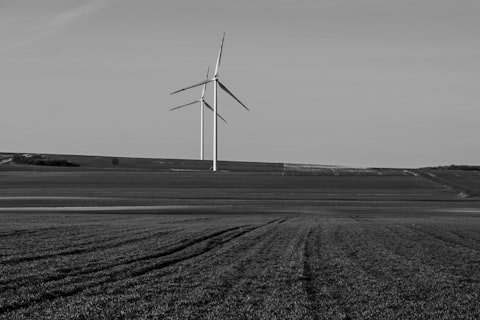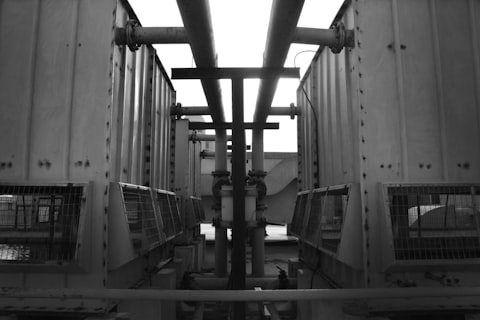Exploring the Four Components that Make Up Ground Engines
Ground engines are essential components of various vehicles and machinery, powering their movement and operation. Understanding the key components of ground engines is crucial for maintenance, troubleshooting, and optimizing performance. This essay delves into the combustion chamber, fuel system, cooling system, and exhaust system that make up ground engines, highlighting their functions, components, and roles in engine operation.
I. Introduction
Ground engines are integral to the functioning of vehicles and machinery, providing the power needed for propulsion and operation. Exploring the components of ground engines offers insights into their intricate mechanisms and the interplay of various systems.
II. Combustion Chamber
Function
The combustion chamber is where fuel and air mix, ignite, and produce the energy needed for engine operation.
Components
Components of the combustion chamber include the cylinder, piston, valves, spark plug, and fuel injector.
Role in the Engine
The combustion chamber is the heart of the engine, where controlled explosions generate power to drive the vehicle or machinery.
III. Fuel System
Types of Fuel Systems
Fuel systems can be categorized into direct injection, indirect injection, carbureted, and electronic fuel injection systems.
Components
Key components of the fuel system include the fuel tank, fuel pump, fuel lines, fuel injectors, and carburetor.
Fuel Injection vs. Carburetion
Modern engines often use fuel injection systems for precise fuel delivery, while older engines may rely on carburetors for mixing fuel and air.
IV. Cooling System
Purpose
The cooling system regulates engine temperature, preventing overheating and ensuring optimal performance.
Components
Components of the cooling system include the radiator, water pump, thermostat, cooling fan, and coolant reservoir.
Coolant Types
Coolant, often a mixture of water and antifreeze, circulates through the engine to absorb heat and maintain operating temperatures.
V. Exhaust System
Function
The exhaust system removes combustion byproducts from the engine, reducing noise and emissions.
Components
Components of the exhaust system include the exhaust manifold, catalytic converter, muffler, and tailpipe.
Emission Control Devices
Modern exhaust systems are equipped with emission control devices to reduce harmful pollutants released into the environment.
VI. Conclusion
The combustion chamber, fuel system, cooling system, and exhaust system are integral components of ground engines, each playing a vital role in engine operation and performance. Understanding the functions and interactions of these components is essential for maintaining, troubleshooting, and optimizing the efficiency of ground engines in various applications.
Exploring the Components of Ground Engines
Keywords
Ground Engines Combustion Chamber Fuel System Cooling System Exhaust System
Introduction to Ground Engine Components 🛠️
Ground engines power countless vehicles and machinery, and their efficiency hinges on the seamless operation of several key components. This section introduces the combustion chamber, fuel system, cooling system, and exhaust system, which are fundamental to the functionality of ground engines.
- Definition and importance of ground engines
- Overview of the four main components
The Combustion Chamber: The Engine's Powerhouse 🔥
The combustion chamber is where the magic happens: fuel and air combust to generate the power that drives engines.
-
Function: Energy generation through combustion
-
Components: Cylinder, piston, valves, spark plug, fuel injector
-
Role: Central to power production in the engine
Figures
Combustion Chamber Components:
Images
Fuel System: The Engine's Nutrient Provider ⛽
The fuel system is akin to a vehicle's digestive system, processing fuel to ensure the engine runs smoothly.
-
Types: Direct injection, indirect injection, carbureted, electronic fuel injection
-
Components: Fuel tank, fuel pump, fuel lines, fuel injectors, carburetor
-
Comparison: Fuel injection vs. carburetion
Figures
Fuel System Types:
Images
Cooling System: The Engine's Thermostat 🌡️
The cooling system prevents the engine from overheating, ensuring it operates within the ideal temperature range.
-
Purpose: Temperature regulation to prevent overheating
-
Components: Radiator, water pump, thermostat, cooling fan, coolant reservoir
-
Coolant Types: Water and antifreeze mixtures
Figures
Cooling System Flow:
Images
Exhaust System: The Engine's Ventilation 🌬️
The exhaust system manages the byproducts of combustion, playing a crucial role in reducing emissions and noise.
-
Function: Removal of combustion byproducts
-
Components: Exhaust manifold, catalytic converter, muffler, tailpipe
-
Emission Control: Devices to minimize pollutants
Figures
Exhaust System Components:





